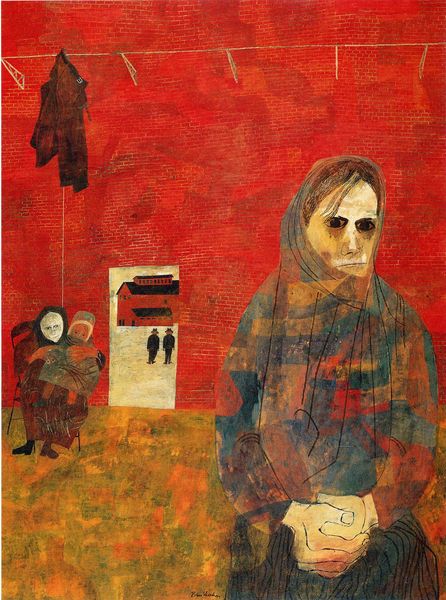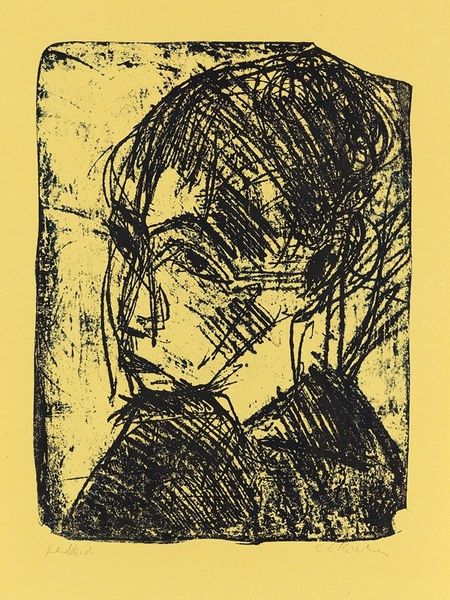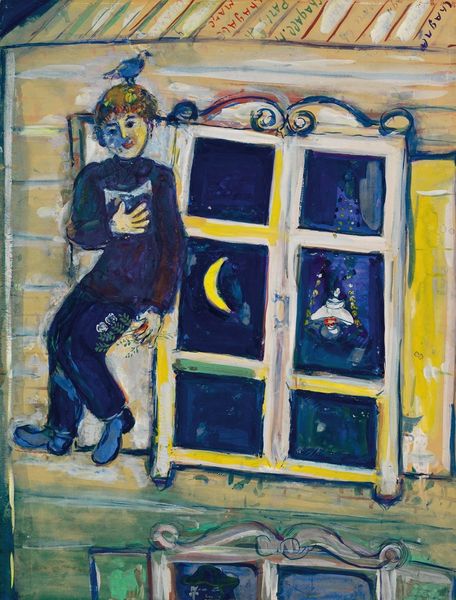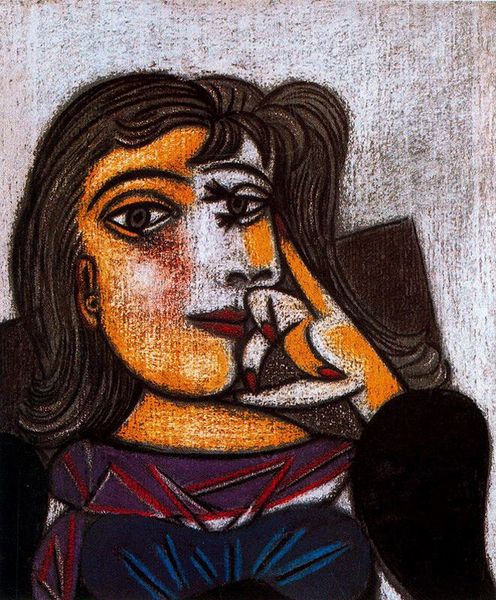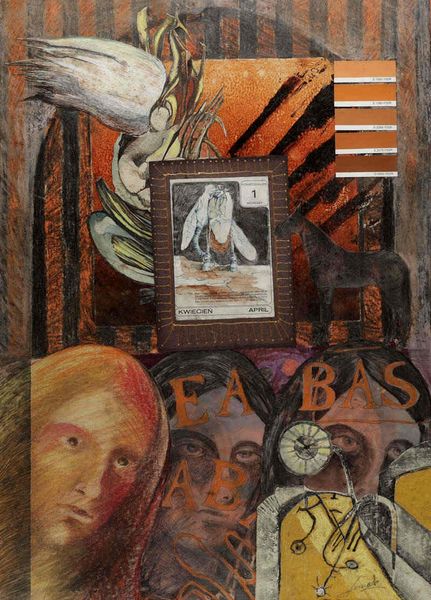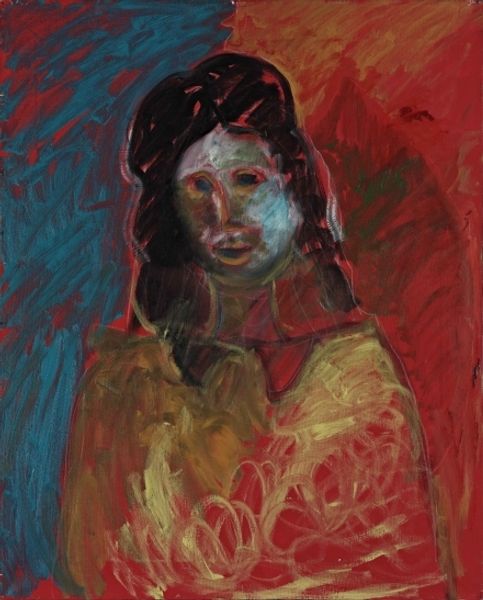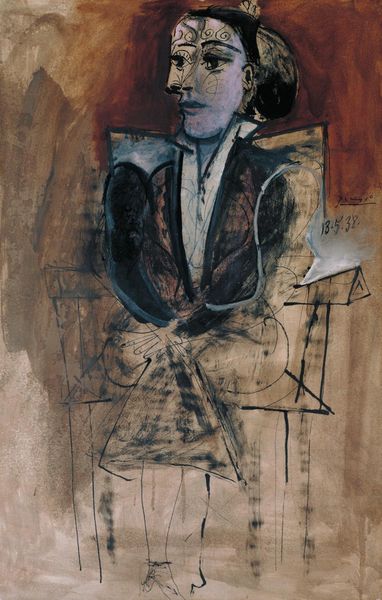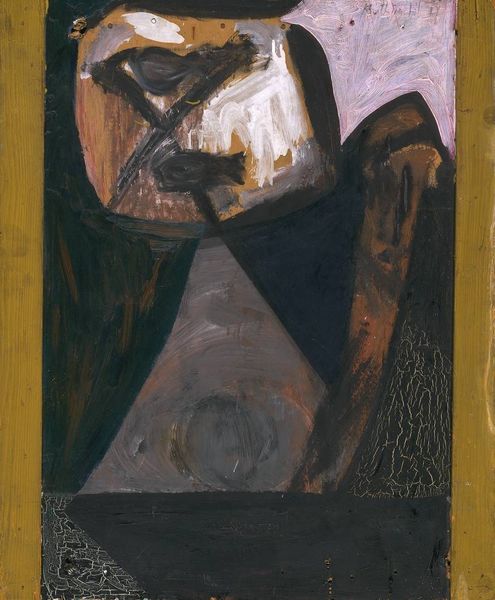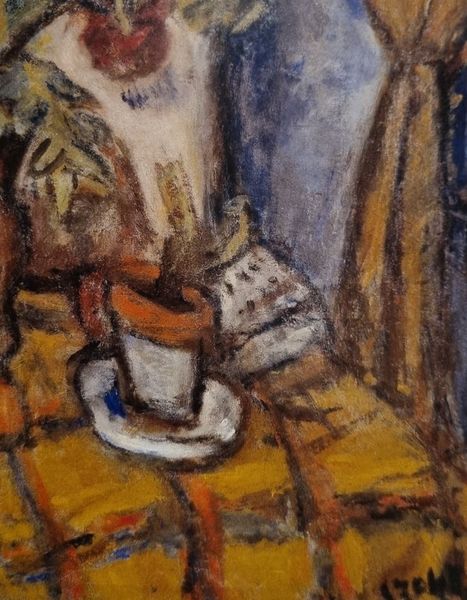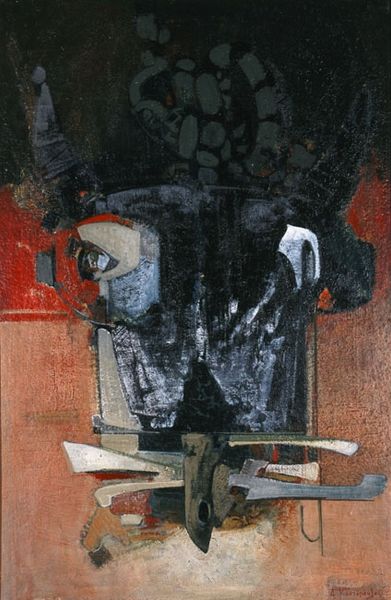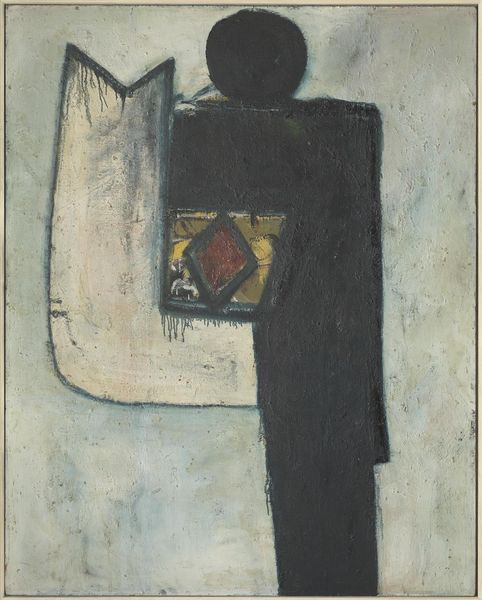
Dimensions: support: 767 x 610 x 20mm frame 1010 x 860 x 55 mm
Copyright: © Tate | CC-BY-NC-ND 4.0 DEED, Photo: Tate
Editor: This is Robert Colquhoun's *Woman with Leaping Cat*, currently housed at the Tate. I'm really struck by the raw texture of the paint and the almost unsettling atmosphere. What can you tell me about the materials and making of this piece? Curator: Colquhoun's work often reveals a focus on materiality. Consider the visible brushstrokes and the layering of paint. How do these choices, these means of production, contribute to the emotional impact of the piece? Editor: It feels very immediate, almost like a sketch, but also very deliberate. Does this immediacy speak to the social context in which Colquhoun was working? Curator: Precisely. Reflect on the post-war period. Scarcity, reconstruction...how might those socio-economic conditions have impacted his choice of materials and his expressive style? What did we learn about this piece today? Editor: I see how the roughness of the materials and technique reflect the era’s realities. Curator: Indeed. And how his labour is a reflection of these times.
Comments
tate 7 months ago
⋮
http://www.tate.org.uk/art/artworks/colquhoun-woman-with-leaping-cat-n06211
Join the conversation
Join millions of artists and users on Artera today and experience the ultimate creative platform.
tate 7 months ago
⋮
Women, either alone or in pairs, were frequent motifs for Colquhoun between 1943 and 1946. Through these figures he conveyed the themes of poverty, old age, isolation and a 'resignation to the human condition'. His tragic subjects seemed poignant and relevant in the aftermath of the Second World War. This was one of a group of paintings Colqhoun exhibited at the Lefevre Gallery in London in 1946. Many critics admired his deft handling of oil paint, rich imaginative colour and confident use of a post-cubist idiom. The latter, in particular, suggested a remarkable understanding of continental avant-garde style at a time when British artists had been isolated from the rest of Europe by war. Gallery label, September 2004


